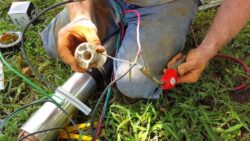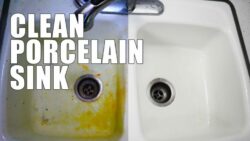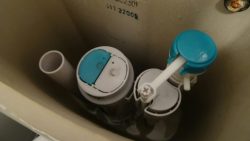Shower Faucet Leaking Behind Wall
Are you tired of the constant dripping sound coming from your shower faucet? Not only is it annoying, but it can also waste a significant amount of water over time. Fortunately, fixing a leaky shower faucet is a task that can be tackled on your own with the right tools and knowledge. In this article, you will learn how to fix a leaky shower faucet from behind the wall. You will be guided through the steps of identifying the type of faucet, turning off the water supply, disassembling the faucet, replacing the necessary parts, and reassembling and testing the faucet.
With patience and attention to detail, you can repair your leaky shower faucet and enjoy a peaceful, drip-free shower experience once again.
Identify the Type of Faucet
You’ll want to figure out what type of faucet you have to properly identify the necessary steps for repair. Different types of faucets require different tools and techniques for repair.
The four most common types of faucets are compression, cartridge, ball, and ceramic disk.
Compression faucets are the oldest and simplest type of faucet. They have separate hot and cold water handles that turn in opposite directions. Common problems with compression faucets are leaks from the spout or handles and drips that continue after the water is turned off. Cartridge faucets have a cartridge that moves up and down to control the water flow. Common problems with cartridge faucets are leaks from the spout or handles, and difficulty turning the handles.
Ball faucets have a single handle that controls the water flow and temperature. Common problems with ball faucets are leaks from the spout or handle, and difficulty controlling the temperature.
Ceramic disk faucets have two ceramic disks that control the water flow and temperature. Common problems with ceramic disk faucets are leaks from the spout or handle, and difficulty controlling the temperature. Identifying the type of faucet you have is the first step in repairing a leaky shower faucet. Once you know what type of faucet you have, you can research the necessary tools and techniques for repair. It’s important to properly identify the type of faucet to ensure that the repair is done correctly and efficiently.
Turn Off the Water Supply
Stop the flow of water by shutting off the valve, preventing any more liquid from spilling out like a dam holding back a rushing river. Turning off the water supply is an essential step before fixing a leaky shower faucet. Neglecting to do so can result in a wet and messy bathroom, water damage, and higher water bills.
Here are three reasons why shutting off the water supply is crucial:
- It prevents water waste: A leaky shower faucet wastes a lot of water, and if you don’t turn off the water supply, you’ll have a continuous flow of water, leading to water waste.
- It avoids water damage: Water damage is a severe problem that can happen if you ignore the leaky shower faucet. By turning off the water supply, you prevent water from seeping into your walls, floors, and ceilings, which can cause significant damage.
- It makes the repair process easier: When you shut off the water supply, you allow yourself to work on the shower faucet without worrying about water coming out. This makes the repair process simpler and quicker.
To turn off the water supply, locate the valve that controls the water flow to your shower. This valve is usually located near the showerhead or behind the wall. Turn the valve clockwise until it’s tightly closed. You’ll know that the valve is closed when the water stops flowing out of the showerhead. Remember, always turn off the water supply before fixing a leaky shower faucet. By doing this, you prevent water waste, avoid water damage, and make the repair process easier. It’s a small step that can save you a lot of trouble and money in the long run.
Disassemble the Faucet
Now it’s time to take apart the faucet by unscrewing the handle and removing the decorative cap, exposing the screws that hold the handle in place. Before disassembling the faucet, make sure to take note of the parts and how they are arranged. This will make it easier for you to put them back together later on.
Common problems that may arise during disassembly include rusted screws and stripped threads. In case of rusted screws, use a penetrating oil to loosen them up. If the threads are stripped, try using a pair of pliers to grip the screw head and turn it counterclockwise. If this doesn’t work, you may need to use a screw extractor tool. Once you have successfully removed the handle, use an adjustable wrench to remove the packing nut, which holds the stem in place.
After removing the packing nut, you can now take out the stem by pulling it straight out. Be careful not to damage the O-ring or washer, which are usually located at the base of the stem.
With the stem removed, you can now inspect it for any signs of damage or wear and tear.
Replace the Necessary Parts
First, you need to identify the type of faucet cartridge in your shower. Cartridges control the water flow and temperature and can vary in design. Ball assemblies are another common type of shower faucet mechanism and are found in single-handle faucets. O-rings and washers are small but essential components that help create a watertight seal and prevent leaks. It’s important to replace these parts promptly to avoid further damage to your shower and water bill.
Cartridges
You’ll need to replace the cartridge to get your shower running smoothly again, but don’t worry, it’s a straightforward process. The cartridge is the part that controls the flow of water and mixes hot and cold water in your shower. Over time, it can become worn out, causing leaks and other common problems. To replace the cartridge, first, turn off the water supply to your shower. Next, remove the handle and the trim plate to access the cartridge. Depending on your shower model, you may need to use a wrench or pliers to remove the cartridge.
Once you’ve removed the old cartridge, it’s important to install a new one correctly. Make sure you choose the right cartridge for your shower model and follow the manufacturer’s instructions carefully. It’s also a good idea to lubricate the cartridge with the plumber’s grease before installing it. This will help it to function smoothly and prevent future leaks. With the new cartridge in place, reattach the handle and trim plate, and turn the water supply back on.
Maintenance tips to prevent future problems include regular cleaning of the cartridge and checking for any signs of wear or damage. By replacing your cartridge when needed, you can keep your shower running smoothly for years to come.
Ball Assemblies
If you’re experiencing issues with water flow or temperature control, it may be time to replace the ball assembly in your bathroom. The ball assembly is a crucial component of your shower faucet, responsible for controlling the flow and temperature of water. Over time, the ball assembly can wear down or become damaged, leading to leaks or inconsistent water pressure.
Here are some maintenance tips to keep in mind before replacing your ball assembly:
- Regular cleaning can help prevent buildup and corrosion that can damage the ball assembly.
- When purchasing a replacement ball assembly, make sure to get one that is compatible with your specific shower faucet model.
- If you’re unsure about how to replace the ball assembly, consult a professional plumber for guidance.
Common issues with ball assemblies include leaks and difficulty controlling water temperature. If you notice water leaking from your shower faucet even when it’s turned off, this is a clear sign that your ball assembly needs to be replaced.
Additionally, if you’re having trouble adjusting the temperature of your shower water, this could also be a sign that the ball assembly is damaged or worn down. By replacing the ball assembly, you can restore proper water flow and temperature control to your shower faucet.
O-Rings and Washers
To maintain a flawless flow, don’t forget to frequently replace the o-rings and washers in your bathroom water control system. O-rings and washers play a crucial role in preventing leaks and drips in your shower faucet. Over time, these components can wear out or become damaged, causing water to seep out of the faucet and into your walls. Replacing washers and troubleshooting o-ring issues are easy tasks that can be completed without professional help.
When replacing washers, it is important to first turn off the water supply. Then, remove the faucet handle by unscrewing the screw that holds it in place. Next, remove the retaining nut to expose the washer. Replace the old washer with a new one of the same size and shape, then reassemble the faucet in the reverse order. Troubleshooting o-ring issues involves inspecting the o-ring for cracks or damage. If found, simply replace the o-ring with a new one. If the o-ring appears to be intact, try lubricating it with silicone grease before reassembling the faucet.
Reassemble and Test the Faucet
Now that everything’s back in place, go ahead and turn the water on to see your hard work pay off with a perfectly functioning shower. But before you do, make sure to turn the faucet on slowly to check for any leaks. If there are no leaks, continue to turn the faucet on all the way and observe the water flow. If the water pressure seems weaker than before, it may be due to a clogged aerator. Remove the aerator and clean it thoroughly before reattaching it to the faucet.
It’s important to note that regular maintenance can prevent future leaks and save you from having to replace the faucet altogether. One tip for faucet maintenance is to avoid using harsh chemicals or abrasive materials when cleaning the faucet. These can damage the finish and cause leaks. Instead, use a mild soap and water solution with a soft cloth to clean the faucet.
Common causes of leaky shower faucets include worn-out washers, O-rings, and valve seats. It’s important to address these issues promptly to prevent further damage to the faucet and potential water damage to your bathroom. By following the steps outlined in this guide and practicing regular faucet maintenance, you can keep your shower faucet in good working order for years to come.
FAQs
How much will it cost to fix a leaky shower faucet?
If you’re wondering about the cost estimation for fixing a leaky shower faucet, it depends on whether you choose to go the DIY route or hire professional services. DIY options can be cheaper, but they require some technical knowledge and the right tools and materials. On the other hand, hiring a professional plumber may cost more, but they have the expertise and experience to fix the issue quickly and efficiently. Additionally, the cost may vary depending on the severity of the leak, the type of faucet, and the location of the problem. It’s always best to get a few quotes and compare prices before making a decision.
Can I fix a leaky shower faucet without turning off the water supply?
You’re standing in front of a leaky shower faucet, wondering if you can fix it without turning off the water supply. It’s like trying to dance around a puddle without getting your feet wet. But with the right fixing techniques, you can repair your faucet without shutting off the main valve. One method is to use a faucet repair kit, which provides all the necessary tools to fix the leak. Another option is to use a wrench to tighten the faucet’s packing nut. However, it’s important to note the pros and cons of each technique.
While a repair kit may be more convenient, it can be more expensive. Tightening the packing nut may be cheaper, but it can cause damage to the faucet if done incorrectly. Ultimately, it’s up to you to decide which approach is best for your situation.
What tools do I need to fix a leaky shower faucet?
To fix a leaky shower faucet, you’ll need a few tools. Firstly, you’ll need a cartridge removal tool to remove the cartridge. This tool is designed to fit over the cartridge stem and twist it out of the valve body. Once the cartridge is removed, you’ll need to lubricate the O rings to ensure they are properly sealed and prevent water from leaking out. To lubricate the O rings, you’ll need silicone grease. Apply a small amount of silicone grease to the O rings before reassembling the faucet.
It’s important to use silicone grease as it is waterproof and won’t degrade the O rings. With these tools, removing the cartridge and lubricating the O rings can be done quickly and easily.
How long does it take to fix a leaky shower faucet?
Imagine you’re driving down a long and winding road, and suddenly you hear a strange noise coming from your car’s engine. You pull over to the side of the road and pop open the hood to investigate. You notice that there are a few common causes of the problem, such as a loose belt or a clogged filter. Depending on your level of expertise, you may decide to tackle the issue yourself with some DIY techniques, or you may opt to seek the help of a professional mechanic.
Similarly, when it comes to fixing a leaky shower faucet, it all depends on your comfort level with plumbing repairs. Common causes of a leaky shower faucet include worn-out washers, faulty cartridges, or loose connections. If you decide to take on the repair project yourself, be prepared to spend a few hours on the task. However, if you’re not confident in your abilities, it’s best to leave it to the professionals.
Do I need to hire a professional plumber to fix a leaky shower faucet, or can I do it myself?
When it comes to fixing a leaky shower faucet, you may wonder whether you should hire a professional plumber or try to do it yourself. While DIY may seem like a cost-effective option, it’s important to weigh the risks of safety hazards that come with attempting to fix plumbing issues without proper training and equipment.
Professional plumbers have the knowledge and experience to identify and solve complex problems, and they also have the necessary tools to get the job done right.
However, if you do decide to go the DIY route, make sure to educate yourself on safety precautions and follow step-by-step instructions carefully to avoid making the problem worse.
Ultimately, the decision of whether to hire a professional or attempt the repair yourself depends on your level of expertise and comfort with the task at hand.
Congratulations! You’ve successfully fixed your leaky shower faucet and saved yourself some money in the process. Remember, the key to fixing any plumbing issue is to identify the problem and take the necessary steps to solve it. By following the steps outlined in this article, you were able to identify the type of faucet you have, turn off the water supply, disassemble the faucet, replace the necessary parts, and reassemble and test the faucet.
As the old adage goes, “an ounce of prevention is worth a pound of cure.” To prevent future leaks, make sure to maintain your faucet regularly by cleaning it and replacing any worn-out parts.
Don’t wait until the problem becomes too big to handle. Addressing the issue early on can save you from a lot of headaches in the future.
Remember, fixing a leaky shower faucet is a fairly easy task that you can do on your own. But if you ever find yourself in a situation where the problem is beyond your skill level, don’t hesitate to call a professional plumber. They have the expertise and tools to tackle any plumbing issue, big or small.





